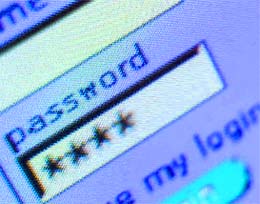First aid for forgotten Windows passwords
 Munich - Forget your Windows password and you've got a problem. "Without the password, users can't get back into the operating system," says Thomas Baumgaertner, a Microsoft spokesman at the company's Munich office. Access to personal data is then blocked and the computer cannot be used as normal.
Munich - Forget your Windows password and you've got a problem. "Without the password, users can't get back into the operating system," says Thomas Baumgaertner, a Microsoft spokesman at the company's Munich office. Access to personal data is then blocked and the computer cannot be used as normal.
But there's no need to panic. "It's still possible to access your own files," Baumgaertner says. The original operating system
installation CDs can be used to start the computer and then copy the files from the hard drive to some other destination like an external hard drive. The operating system must then be completely reinstalled, including a reformating of the hard drive, but the data is still secure at the external location.
One way to prevent password issues from getting in the way is to install an alternative boot system, recommends Thomas Neuburger, a German IT expert. That allows users who have forgotten their password to gain access to the system anyway using a different version of their operating system on a different hard drive partition or an external hard drive. It's important to use a different password for that other version, though.
Forgotten passwords are more of a hassle than a major problem to Dominik Hoferer from Germany's Chip computer magazine. He points to the existence of recovery programs, which "can't exactly crack the passwords, but can reset them." There are both commercial programs for sale as well as free ones on the internet.
Some see a problematic aspect to all of this, since the programs can theoretically be used to "crack" any computer password. Baumgaertner is also critical of the recovery tools available. The passwords are saved as encrypted files on the hard drive, meaning that there is no guarantee that the programs will really be able to access the data.
"Nor will they possess an authentication certificate," he says. That means that users have no way to be certain that the software stops at just resetting the password - and doesn't quietly initiate additional processes or spy on computer data.
For this reason Microsoft recommends creating a password reset disk for critical situations. From within Windows, you first press the key combination Ctrl+Alt+Del and then select the "Change Password" menu item. The old password is entered and then a new one created. That password is then stored as a file on an external storage medium. "Make sure you take care of this before you need it," Hoferer advises.
Once the disk has been created, a forgotten password means launching the password assistant to open the reset file and return to the last saved state. Just be sure to keep that file safe. One other thing: "You can't do this on all Windows systems," Baumgaertner says. The new Windows 7, for example, does not support it. (dpa)